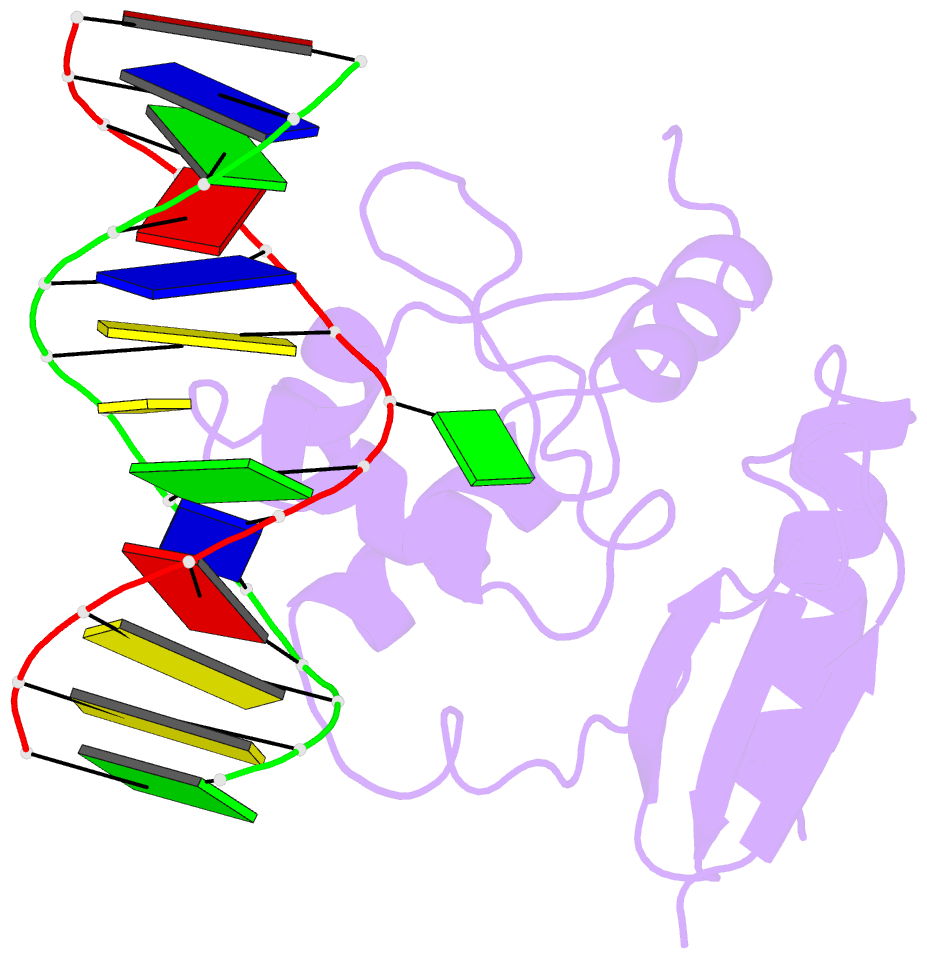Summary information and primary citation
- PDB-id
- 1t38; SNAP-derived features in text and JSON formats;
DNAproDB
- Class
- transferase-DNA
- Method
- X-ray (3.2 Å)
- Summary
- Human o6-alkylguanine-DNA alkyltransferase bound to DNA containing o6-methylguanine
- Reference
- Daniels DS, Woo TT, Luu KX, Noll DM, Clarke ND, Pegg AE, Tainer JA (2004): "DNA binding and nucleotide flipping by the human DNA repair protein AGT." Nat.Struct.Mol.Biol., 11, 714-720. doi: 10.1038/nsmb791.
- Abstract
- O(6)-alkylguanine-DNA alkyltransferase (AGT), or O(6)-methylguanine-DNA methyltransferase (MGMT), prevents mutations and apoptosis resulting from alkylation damage to guanines. AGT irreversibly transfers the alkyl lesion to an active site cysteine in a stoichiometric, direct damage reversal pathway. AGT expression therefore elicits tumor resistance to alkylating chemotherapies, and AGT inhibitors are in clinical trials. We report here structures of human AGT in complex with double-stranded DNA containing the biological substrate O(6)-methylguanine or crosslinked to the mechanistic inhibitor N(1),O(6)-ethanoxanthosine. The prototypical DNA major groove-binding helix-turn-helix (HTH) motif mediates unprecedented minor groove DNA binding. This binding architecture has advantages for DNA repair and nucleotide flipping, and provides a paradigm for HTH interactions in sequence-independent DNA-binding proteins like RecQ and BRCA2. Structural and biochemical results further support an unpredicted role for Tyr114 in nucleotide flipping through phosphate rotation and an efficient kinetic mechanism for locating alkylated bases.





